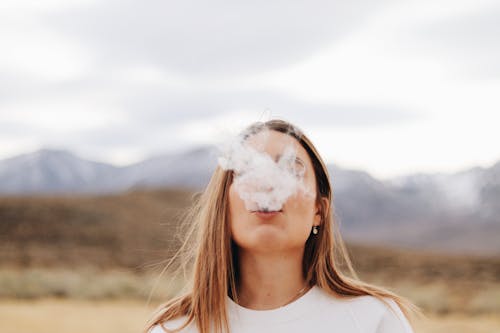
You likely already know that smoking cigarettes is extremely dangerous, but are you aware of the dangers of second hand smoke, from the cigarettes of other people?
Responsible for a host of potentially fatal issues, such as cancer, heart disease, diabetes, and lung diseases, smoking lowers your chances of a long and healthy life. This is why it’s so important to seek help for quitting smoking if you feel you’re unable to stop alone.
Unfortunately, sometimes you don’t need to be a smoker to suffer from the negative impact of cigarette smoke. Second hand smoke can be just as dangerous as smoking directly, particularly if you’re naturally more predisposed to high levels of smoke sensitivity.
Below, we’ll be exploring the dangers of second hand smoke, and discussing whether it can be just as bad, or even worse for your health than smoking.
What is Second Hand Smoke?
Second hand smoke refers to your exposure to the dangerous substances from cigarettes other people are smoking. If you’re around people who smoke regularly, you should be aware of the dangers of second hand smoke. When someone smokes a cigarette, tobacco pipe, cigar, or even an e-cigarette, all of the smoke won’t necessarily go into their lungs.
As you may notice, people who smoke are often surrounded by a cloud of smoke pollution, made up by the smoke they exhale, and the “side stream” of smoke created at the lit end of a cigarette.
People situated nearby a smoker can easily inhale some of this secondary smoke, even if they’re not standing directly in the cloud. This “passive” smoking makes second hand smokers more likely to get the same diseases as smokers, from lung cancer to heart disease.
Second hand smoke contains more than 7,000 chemicals, hundreds of which are toxic. According to some studies, there are approximately 70 ingredients in second hand smoke capable of causing cancer.
According to the CDC, there is no risk-free level of exposure to second hand smoke. Even people who only inhale a very small amount of this smoke can be exposed to a variety of health issues, from severe asthma attacks to strokes.

How Dangerous is Second Hand Smoke?
With so many lethal irritants, toxins, and cancer-causing substances in second hand smoke, it’s best to avoid exposure at all costs. This is one of the many reasons why so many governments have prevented people from smoking in enclosed public spaces over the years.
Although research into the dangers of second hand smoke is still ongoing, current studies indicate it’s not quite as dangerous as first-hand smoke for most people. Around 480,000 US deaths occur from smoking in general each year. Alternatively, exposure to second hand smoke causes around 41,000 deaths in America each year.
Of course, second hand, and passive smoking is still extremely dangerous. Part of what makes second hand smoke so problematic is you may not always be aware you’re exposed to it. A lot of the irritants and substances in second hand smoke are invisible. Opening a window or smoking in another room of a home won’t necessarily protect your family.
Smoke can also linger in the air for several hours after someone finishes a cigarette, meaning it’s easy for dangerous toxins to be passed to non-smokers. Similar to smoking, second hand smoke is known to cause cancer, even in people who have never smoked fully.
Common cancers caused by second hand smoke include larynx, nasopharynx, and breast cancer. Exposure of mothers and babies to second hand smoke can also cause childhood cancers including lymphoma and leukaemia.
Second hand smoke can also be harmful in other ways. Breathing second hand smoke affects the heart and blood vessels, increasing blood pressure and increasing your risk of heart attack and stroke. Experts even say second hand smoke can heighten your risk of heart disease.
Who is Most At Risk When it Comes to the Dangers of Second Hand Smoke?
For anyone, regular exposure to second hand smoke is dangerous. However, some people are more at risk than others. People who breathe in second hand smoke regularly are at greater risk of diseases such as lung cancer and heart disease because they get more frequent exposure. As a result, children who grow up with a parent who frequently smokes or people with smoking partners are at greater risk.
Some people are also more likely to suffer from a wider range of problems as a result of second hand smoke. Pregnant women exposed to second hand smoke are at greater risk of premature birth.
Children are particularly at-risk from second hand smoke, because they have less developed airways, immune systems, and lungs. Children in a household where at least one person smokes will be more likely to develop:
- Chest infections such as bronchitis and pneumonia
- Asthma
- Meningitis
- Coughs and colds
- Ear infections
- Regular ailments (such as colds and flu)
Children can be particularly vulnerable to the risks of second hand smoke in enclosed or small spaces, where smoke can reach dangerous levels more easily. In cars, for instance, it’s easy for smoke levels to rise out of control, even when windows are opened.
Your Genetics and Second Hand Smoke
Similar to many health concerns, your risk from second hand smoke can also be influenced by your genetics. Some people are more naturally susceptible and sensitive to certain forms of environmental toxins and pollutants. The CircleDNA test can reveal how sensitive you’re likely to be to second hand smoke.
Increased susceptibility to second hand smoke is usually caused by genetic mutations, which increase the potential impact of any environmental or second hand smoke you’re exposed to. It’s similar to how some people will be more susceptible to caffeine or sugar.
You may also be more at risk from second hand smoke if you already have conditions associated with your lung function or chest. For instance, people with asthma will often find their asthmatic symptoms are agitated by exposure to second hand smoke. People with COPD can also find it very difficult to be around people who smoke, even after they’ve finished their cigarette.

Is Second hand Smoke from E-Cigarettes Dangerous?
Vaporizers and e-cigarettes have become increasingly popular in recent years as they’re often perceived to be a healthier alternative to smoking. However, e-cigarettes still have their dangers. Many people have expressed concern over the years about the side-effects of breathing in second hand aerosol from a vaporizer, known as second hand vapor.
Currently, experts suggest it’s still important to avoid exposure to second hand vapor wherever possible. The vapour created by these products can still expose people to nicotine and other harmful chemicals. These substances can cause various dangerous side-effects, including chest infections, and respiratory problems. There’s also a risk for cancer.
Most governments are beginning to extend smoke-free and tobacco-free policies to cover -cigarettes and similar devices.
Ways to Protect Against Second Hand Smoke
It’s not always easy to tell when second-hand smoke is in an environment, which can make protecting yourself extremely difficult. The best way to keep people safe from second hand smoke is for smokers to avoid smoking around others. Smokers should always be asked to smoke outside, and away from groups at work, in public places, and within recreational environments.
If you’re concerned about your risk levels, try these tips:
- Smoke outdoors and keep homes and cars smoke-free environments: Ensure enclosed places are always kept free from smoke. Simply having a window open in your car or house isn’t enough to protect children and other people from second hand smoke. Set specific rules about where smoking is allowed on your property, and make sure your friends and family members follow them.
- Speak to your boss: There are various government standards in place which require workplaces to set aside designated smoking areas for employees, away from the rest of the team. If you’re concerned, you’re still being exposed to second hand smoke at work, speak to your boss about steps you can take to reduce your risk.
- Be cautious: Stay away from public places which allow smoking. If you know there are certain areas where you’re more likely to be exposed to second hand-smoke, keep your children and yourself as far away as possible. While this might not always be an option, you can always cross the road or walk in a different direction if you see someone smoking.
- Use air purifiers: Air purifiers may not be able to remove all the toxins and potential contaminants of second hand smoke from the air, but they can have a positive impact. Using high efficiency particulate air filters can help to filter the toxins in the air. You can even look into specialist air purifiers which specifically work on reducing smoke.
- Boost your immune system: Certain substances, such as ginger, green tea, and turmeric can help to protect the body against common toxins. The compounds in these herbal substances are highly effective at inhibiting the activation of carcinogens in environmental and cigarette smoke. Consider adding some natural protection to your diet.
Reduce your Exposure to Second Hand Smoke
The first step in protecting yourself and your family from second hand smoke is awareness. You need to understand not just how dangerous second hand smoke can be, but how at risk you are. A DNA test can help you to understand your sensitivity to various forms of toxins and environmental pollutants, so you can be better prepared to protect yourself.







This Post Has One Comment
Comments are closed.